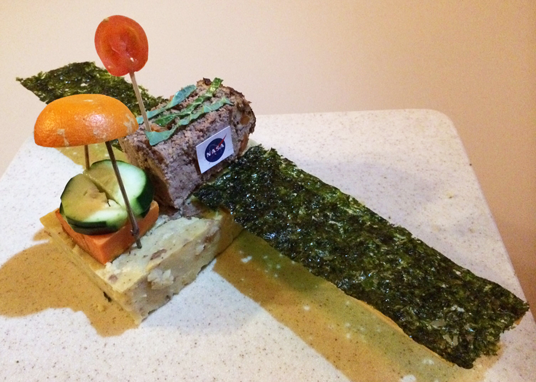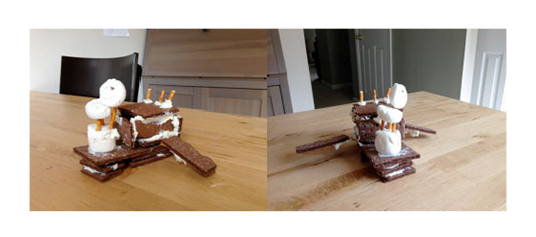Ask NASA Climate | February 10, 2014, 16:31 PST
Food for scientific thought

A nutritionally correct GPM model.
NASA’s new Global Precipitation Measurement (GPM) Core Observatory is slated to launch later this month, so when I first got wind of instructions for making an edible model of the GPM satellite, my interest was piqued. This blog is supposed to be about connecting to regular people, I thought, so I’ll make an edible model, take a photo of it, eat it and then write about it. Sounds awesome, right? I went about hunting down the instructions and found them here.

The instructions for making the model said that they were suggestions, which to me meant that I could make an edible model of NASA’s new GPM satellite with whatever ingredients I wanted. So I decided to make a model that I would actually be willing to eat without wasting any food. You can decide for yourselves if it looks nasty, scary or yummy. My family and I ended up eating all of it, and I was surprised by how much I learned about the instrument by having to look at it so carefully.
I encourage you to get creative and make your own edible model of NASA’s new GPM satellite with whatever foods you see fit and to voice your fair and honest opinions in the comments.
Laura
P.S. Here are my GPM model ingredients: The dual-frequency precipitation radar is mashed potato; the avionics and propulsion module is turkey walnut meatloaf decorated with kale; the microwave imager is yam, cucumber and orange; the high gain antenna is cherry tomato; and the solar array is made of seaweed. Some of the vegetables were harvested from my own organic garden.
